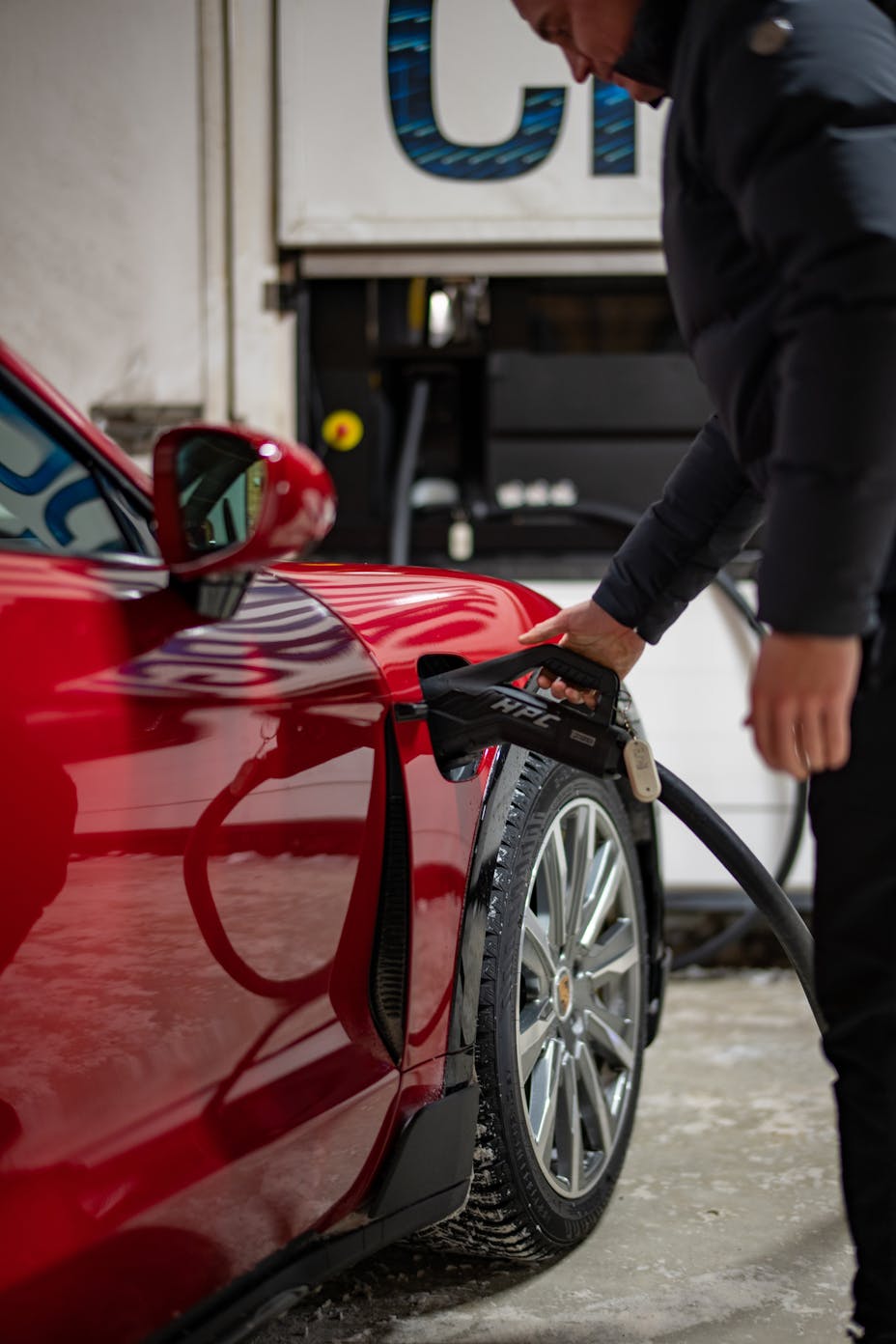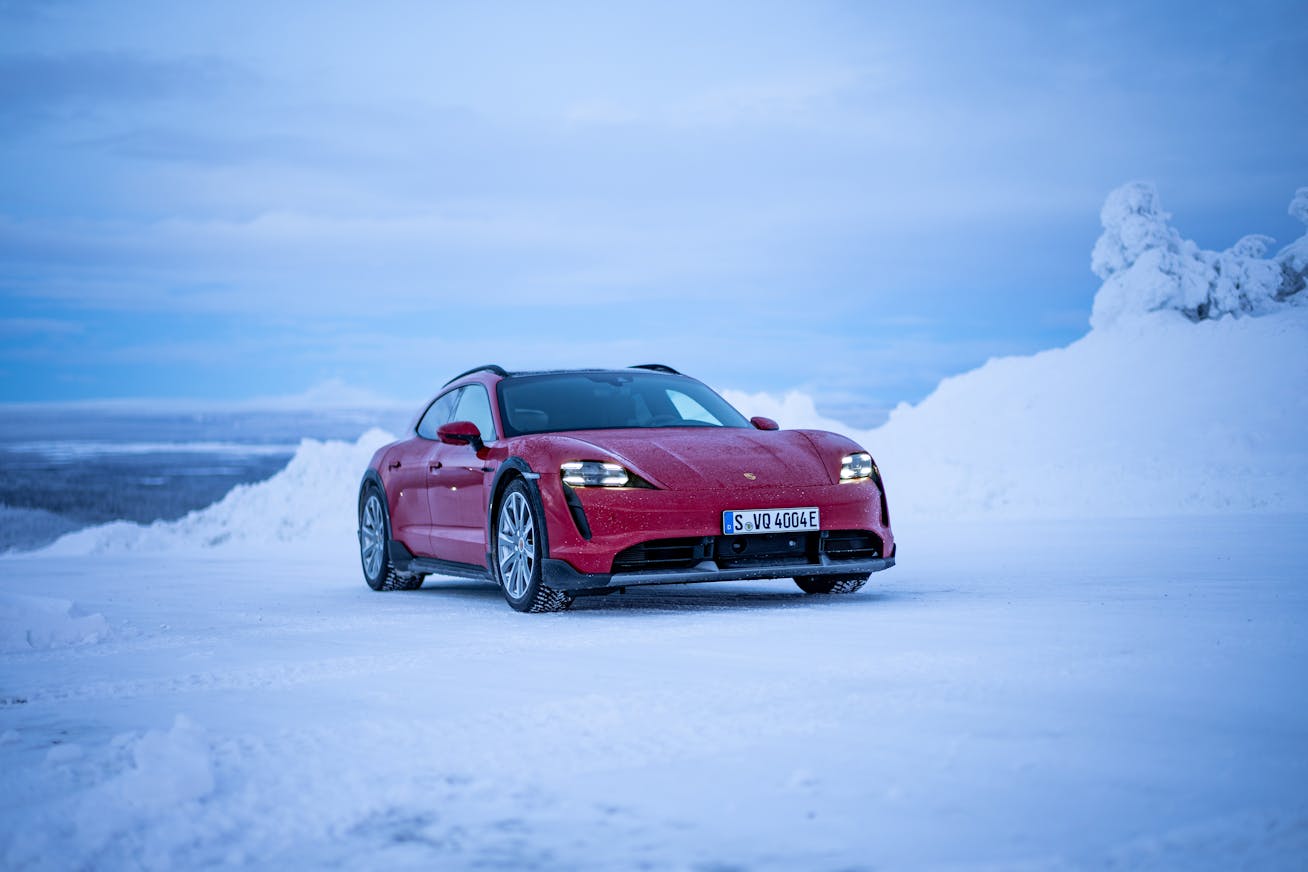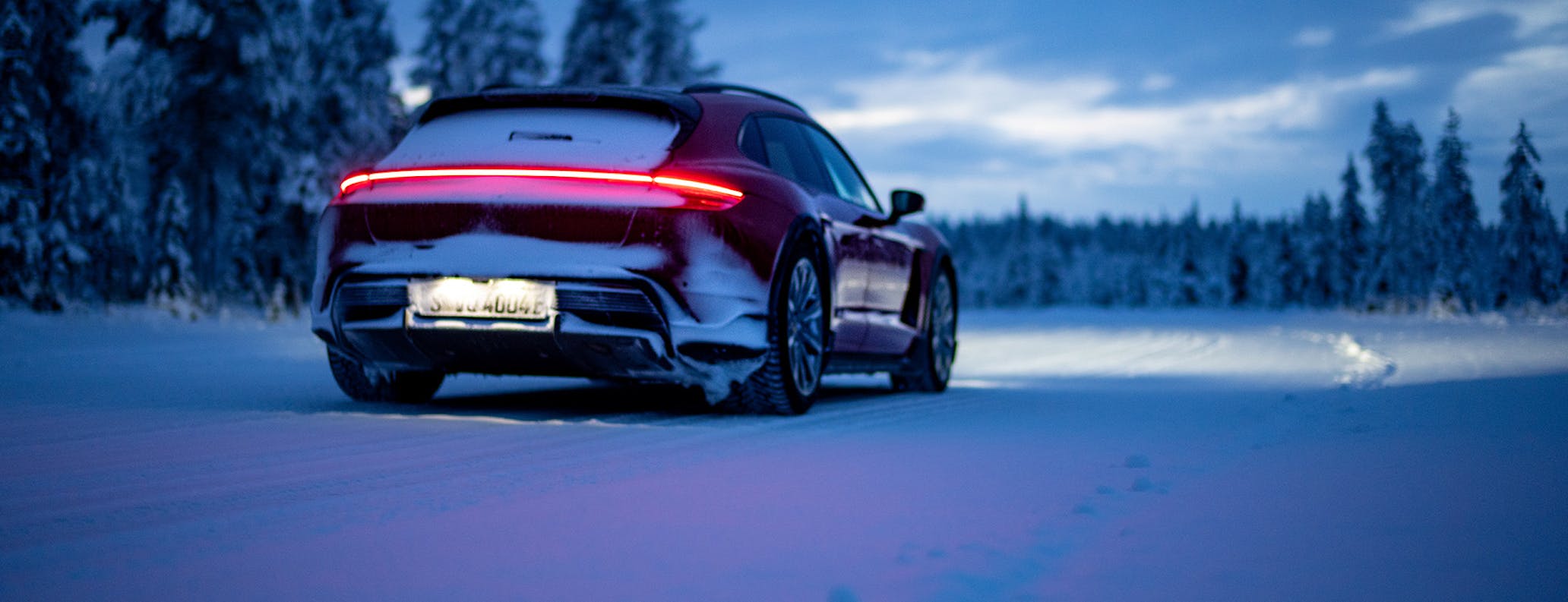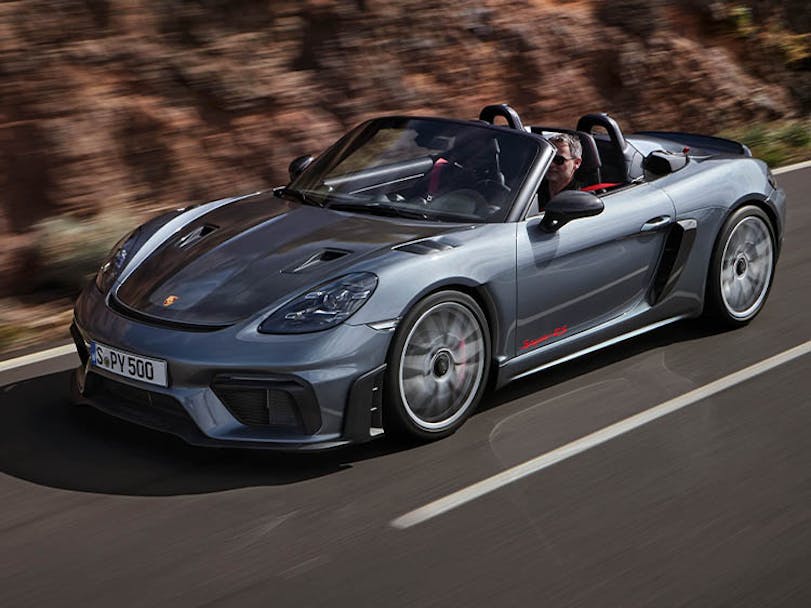Stories
Experience
Mobility
Design
Dreams
Innovation
Culture
Can you drive a Porsche electric car in winter?
Answering the important questions about EV ownership in colder conditions
February 10, 2022 | 8
min read
Does cold weather affect electric car performance? To find out, we spoke to a Porsche electric vehicle engineer who explains all you need to know about how the Taycan works in winter
There are still several myths flying around about electric vehicle ownership – not least about their performance during winter months. Volker Sonn, a research and design expert in the field of performance and efficiency for Porsche electric vehicles, explains how the Porsche Taycan works in colder conditions – and why its unique qualities help make it a great car to drive in such circumstances. How much do drivers need to worry about the range of an electric car in winter? “For the Taycan, we took into account the influences on range that we’ve just talked about from the very beginning of its development. From its excellent aerodynamics, tyre development, drivetrain to the highly sophisticated overall vehicle thermal management system in the Taycan, a wide range of innovations were implemented to help minimise range effects on this electric car in winter. But there are factors that can only be addressed to a certain extent because physics sets limits here – like the increase in the aerodynamic drag that any car is subjected to under cold conditions, as mentioned earlier. “However, in order to help our customers understand this, we developed a range indicator, available on the Porsche Homepage, which demonstrates how different conditions and configurations impact the range of the vehicle. We have compared the range indicator with thousands of test kilometres and know that it works very well. Also, my personal experience after many, many trips over the past two winters with the Taycan is that the package of measures to optimise the range is very effective.” In wintry conditions, electric vehicles like the Porsche Taycan have a number of advantages over conventional cars | IMAGE © Daniel Laaksonen All vehicles, no matter how they are powered, are less efficient in winter. Can you explain why? “There are lots of factors, regardless of the type of drivetrain, that affect the efficiency of a car in winter. Winter tyres, for example, usually have another compound for snow and ice which can be a disadvantage compared to rolling resistance-optimised summer tyres. Moreover, rolling resistance of tyres in general increases at cold temperatures. “Then, there’s the increase of aerodynamic drag, depending on the temperature. This is because cold air has a higher density – and, of course, there’s nothing you can do to get around this. Next, mechanical losses in a cold powertrain are initially higher because on a cold start it takes a while for the lubricants to reach operating temperature. This all means lower efficiency in winter conditions. But these are inefficiencies that are common to all cars on the roads.” Is there anything about the unique set-up of an electric vehicle like the Taycan that causes a challenge for manufacturers like Porsche? “When talking about the range loss of electric vehicles in winter, many blame it on a loss of battery capacity. However, a distinction must be made between capacity (the battery’s ability to store energy) and power (its ability to deliver electrical power). The electrical power of batteries, in particular, decreases at cold temperatures. For the Taycan, however, this effect plays a very minor role because the battery has very high power reserves, even at cold temperatures. A function on the electric charging cover on the Porsche Taycan ensures its functionality even in the case of freezing temperatures | IMAGE © Daniel Laaksonen “But the biggest challenge for any electric car in winter is the efficient use of energy that is needed to heat up the cabin and then maintain the desired temperature within it. As we’ve said, energy consumption in winter is higher than in the summer, regardless of the drivetrain. The big difference between EVs and ICEs [cars powered by internal combustion engines] is that in conventional vehicles, the combustion engine produces large amounts of waste heat, which is used to heat the interior without having a significant impact on the range. The drivetrain of an electric vehicle is, of course, much more efficient – but this means that there is much less waste heat that can be used to warm the interior. So heating the cabin must therefore be predominantly electric, and that affects the range. “This is particularly noticeable in short-haul operation, with stop and go. In this case, the percentage of energy needed to heat up the cabin can be particularly high compared to the energy required to drive the vehicle. For long-distance journeys, where the range of the vehicle is also the most important factor, the energy requirement for air conditioning is proportionally lower. Either way, with the optional heat pump in the Taycan, we have an excellent device to deal with this effect. The heat pump uses the residual heat of the drivetrain to efficiently warm up the vehicle interior. This saves energy and has a positive effect on the range.” What things do you need to do when preparing or driving an electric car like the Taycan in winter? Can you explain what ‘preconditioning’ means, for example? “In order to achieve the highest range from an electric car in winter, the most effective function you have at your command is preconditioning, which you use in conjunction with the departure timer. When the vehicle is connected to the wallbox, the interior is preheated to the desired temperature, so the energy that is needed to heat up the cabin will not affect your range. Vehicles equipped with a heat pump can be preconditioned even more extensively and preheat the battery to a higher temperature level.” When driving, the optional heat pump uses the heat stored in the battery to condition the interior to the desired temperature. It means that minimal electrical energy from the battery needs to be used for the interior air conditioning while driving Volker Sonn | Manager, Performance & Efficiency, Electric Vehicles, Porsche “When driving, the heat pump then uses the heat that is stored in the battery to condition the interior to the desired temperature. What this means is that minimal electrical energy from the battery needs to be used for the interior air conditioning while driving. This makes a huge difference for the range of long-distance journeys because you pretty much need no additional energy for heating compared to normal conditions.” Besides the obvious benefits of EV mobility that you get with the Taycan, there are several others too, aren’t there – like battery position? “The position of the batteries in the underbody of the Taycan, between the axles, leads to perfectly balanced axle load distribution. Conventional vehicles usually don’t come anywhere close to this. This leads to very good traction and handling, even when the friction coefficient of the road is very low because of snow and ice.” The Taycan develops huge amounts of torque, but feels controlled in snow and ice | IMAGE © Daniel Laaksonen One of the outstanding benefits of the Taycan is huge amounts of torque – but that can be a challenge on wintry roads. How does the technology of the Taycan always ensure good drivability? “The high amounts of torque in the Taycan drivetrain can be controlled very sensitively, much more than in conventional vehicles. The hardware and software of the electric powertrain has been developed in such a way that the chassis systems are able to respond very precisely and with the shortest possible reaction times to different driving situations – like when it detects that the wheels are slipping. This results in excellent drivability and driving dynamics for this electric car in winter. It really is a pure pleasure to drive the Taycan on snow and ice.” Can electric vehicle batteries freeze? “No, they can’t – at least not as we know it from liquids. However, as we’ve discussed earlier, the performance of the battery is influenced by the temperature. At very cold temperatures, the performance can drop to such an extent that the battery must be preconditioned to achieve typical Porsche driving performance, using the sophisticated thermal management in the vehicle. By the way, if the car is left stationary for more than two weeks, we recommend that the ambient temperature is between 0°C and 20°C and the battery charge status is maintained between 20 per cent and 50 per cent during this time.” The preconditioning in the Taycan warms up the batteries, interior and means no more scraping ice from windscreens | IMAGE © Daniel Laaksonen Are there any other ways in which electric cars like the Taycan have an advantage over petrol-engined vehicles in winter? “In addition to its great driving characteristics, there’s also a high level of comfort in the Taycan that comes with a parking heater function as standard. No matter where you are, provided you have a mobile connection, the interior can be warmed up in just a few minutes. And unlike conventional vehicles, where warming up the car beforehand can be unpleasant in underground garages, it does this emission-free. It also means that driving off from a cold car or scraping the windows clear of ice is a thing of the past with the Taycan. Of course, in order to have the maximum range available when you drive off, ideally the vehicle should be connected to the grid during parking pre-climatisation. “Even if you forget to use the preconditioning, the interior is heated by the electric heaters, which produce warmth practically without delay. It heats up the interior faster than is usual with conventional vehicles, where the engine and lot of cooling fluids must get up to temperature before the cabin can be heated up. And finally, there’s a special function for the electric charging cover that ensures its functionality even in freezing temperatures, literally ‘breaking the ice’, meaning that you can even charge your Taycan when the temperatures are very low.”
Looking hot, whatever the season
Build your Taycan
Continue reading
The new Cayenne Electric: the next chapter in the Porsche sportscar legacy
Outstanding power. Sportscar performance. The new Cayenne Electric is the Porsche among SUVs – and so much more besides. Think innovations derived from Porsche Formula E racecars, fast charging capabilities and redefining the interior experience
Read more
Which Porsche cars are electric?
Porsche has two fully-electric model ranges, as well as several models which feature hybrid power. Here’s a full list of those currently available
Read more
How much is a Porsche 718 Spyder RS?
A high-revving, extremely powerful engine, shared with the GT3 Cup race car. Roof down roadster excitement. Dynamic chassis. And a sporty, focused interior. This is a Porsche two-seater sportscar like no other
Read more











